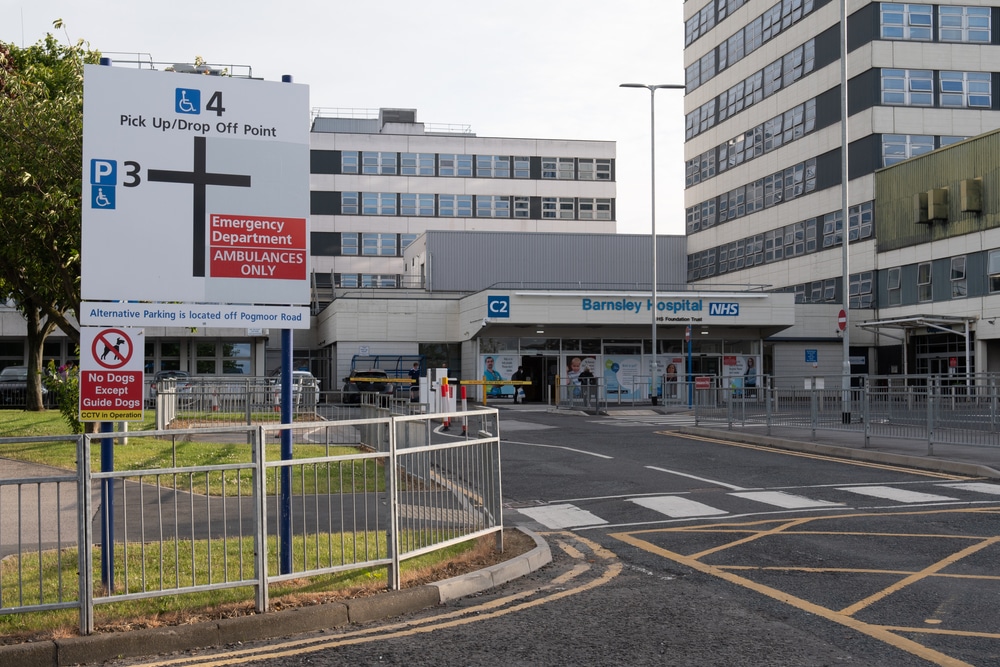Emil Peters discusses the next steps for the health and care technology sector

Recently appointed CEO of Tunstall Healthcare, Emil Peters speaks to ICJ about the future of telecare and telehealth and the impact of a seismic era of system transformation for UK health and care.
“Great advances in medicine have been made during periods of immense stress and strain,” says Emil Peters, recently appointed Tunstall CEO. Peters finds himself at the helm of the largest social care technology provider in the country during a period of critical reform for the health sector. “A lot of our early medicinal advances originated from battlefields and war injuries,” explains Peters and the pandemic, he insists, has been the latest catalyst for change in the health sector – but the reform has not come from new antibiotics or medicines, but a newfound acceptance of the value of medical technologies, such as telehealth.
“Tunstall today has become an integral part of a constantly evolving definition of health and care“
Peters, who moved to Tunstall after 25 years at health technology giant Cerner (the last five of which were spent as President of the International markets), is no stranger to major upheaval in health reform – but even he would admit that the current period of turbulence is unlike any other the sector has faced. He enters his new role as the UK government releases a slew of policy reforms, with the intention of turbo charging a digital and data led transformation of the health and care sector. The latest paper Digital revolution to bust COVID backlogs and deliver more tailored care for patients, places telehealth as a central priority of the government’s digital transformation of the sector.
Peters likens Covid-19 to a dark cloud with a silver lining, “the pandemic has given us lived experience of technology, forcing our lives to be lived through screens whether they be your phone or whether they be your computer or your television.” Interestingly, Tunstall began as a Yorkshire based television repair company but has since grow to over five million users globally and almost two million in the UK alone, becoming one of the biggest players in telecare in the process. Now, Peters hopes to use this position of strengths to take on a newfound leadership position within the sector, helping to drive technology based transformational change, enhancing access to health care to disenfranchised communities and reducing rampant health inequality across the country.
At one point, the health tech industry was still arguing with hospitals as to the benefits of using digital over paper-based methods. Today it is widely accepted that telehealth is now central to the evolution of the concepts of health and care. “Through being able to connect patients and carers in the broadest possible terms, Tunstall today has become an integral part of a constantly evolving definition of health and care,” affirms Peters.
Evolving telehealth in an ICS context
If Covid was the “slap in the face” as to the value and potential of health and care technologies, then the prospect of integrated care in the UK could prove to be the mechanism which permanently embeds technology like telecare and telehealth into care pathways.
Each integrated care system (ICS) has placed preventative and personalised care, defined through population health management approaches, as central priorities to care delivery. In many ways, telecare and telehealth could be the glue that connects ICS wellness strategy, via enhanced access to care and reduced strain on healthcare services.
“The pandemic reminded all of us of the value of working together”
Previous barriers to technology adoption are being eroded in favour of holistically implemented transformational change and the rapid growth of the telehealth sector is helping to shift discourse away from simply reducing acute sector pressures. Priorities are now shifting towards maintaining good health for people as long as possible, keeping people healthy and supporting them in the best version of their life as they define it.
“Among many other things, the pandemic reminded all of us of the value of working together. Previous hesitations to collaboration have held the sector back – but these barriers are gradually being eroded and this collaborative momentum has manifested itself in the integrated care agenda.
“In the same vein that we used technology for our supply and demand calculations for the testing of PPE, we now need to think about that in terms of cancer, orthopaedics, neurology, all the other things that we need to be bringing to people because frankly, we kind of went away with that.”
A new era for health and care technology?
Peters considers the current moment a once in a generation opportunity to shift norms. “Historically the system has found ways of preserving itself. We were constantly training for trying to find ways to preserve what we have. Business as usual is no longer an option.”
“I’ve seen a lot of ‘tech for tech’s sake’, and those endeavours tend to be like shooting stars. They burn bright and they fade away“
“Telehealth can enable clinicians to see the people they need to see. It allows people within the clinical space to operate to the top of their licence. And it allows me as a son and as a neighbour to operate to the top of my licence when caring for loved ones. Technology like telecare can help me check in on my elderly neighbour, to check in on my mother, who lives in San Antonio, Texas, thousands of miles away.”
Peters’ bread and butter is facilitating health and care innovation but his focus with Tunstall will be less on the outright ‘technical innovation’. Rather, Peters is interested in innovating the constructs of how they apply technology. “Our focus is much more centred on value. What is the value of what we’re about to go do? Is it just tech for tech’s sake? Or is there a clearly defined purpose in mind?”
Peters wants to move the sector from a ‘thousand flowers blooming at once’ mentality to innovation, and towards a focused approach built upon consistent standards. “I’ve seen a lot of ‘tech for tech’s sake’, and those endeavours tend to be like shooting stars. They burn bright and they fade away. But the innovations that really produce value for the provider, for the person, for the family, those are the things that that will truly be lasting.”
“It’s up to us, how much we harness this moment,” insists Peters, who warns that a complacent approach to innovation risks returning to a ‘business as normal scenario’. “Are we going to try to fight to go back to the way that we did and run our outpatient clinics the way that we had? Or has this given us a new view on how things can happen? Clinicians want and need to spend time with the people that truly need attention from someone of their levels of qualifications and who can truly have an impact.”
In Peters’ mind, the impact that is needed with technology cannot be understated insisting that, “it must become this century’s version of a clean water supply for the health and care sector.”
In September 2022, Tunstall will be joining ICJ and PPP for the ICS Roadhshow, a series of regional conferences to discuss the progress of integrated care at a localised level. To find out how to get involved, please visit our ICS Roadshow homepage.








